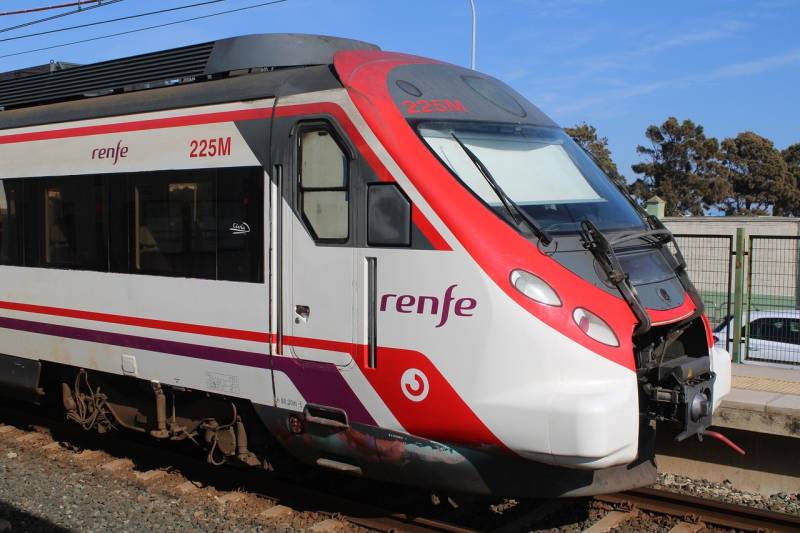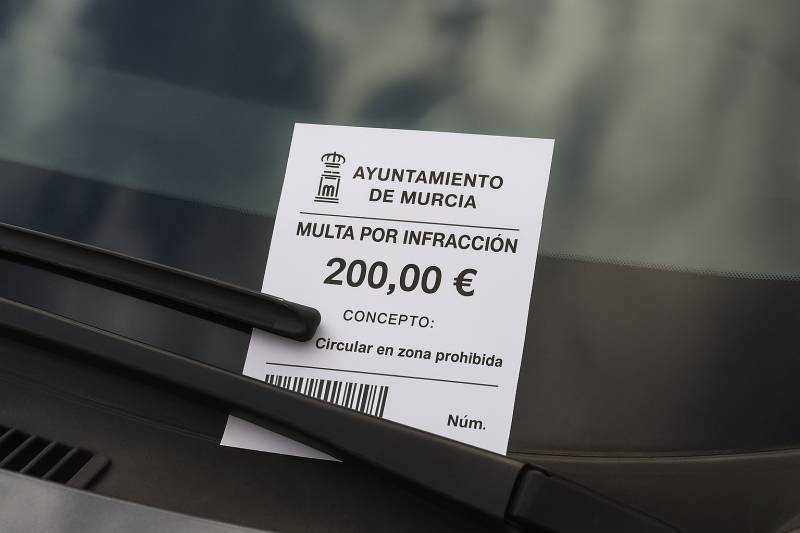- Region
- Águilas
- Alhama de Murcia
- Jumilla
- Lorca
- Los Alcázares
- Mazarrón
- San Javier
-
ALL AREAS & TOWNS
- AREAS
- SOUTH WEST
- MAR MENOR
- MURCIA CITY & CENTRAL
- NORTH & NORTH WEST
- TOWNS
- Abanilla
- Abarán
- Aguilas
- Alamillo
- Alcantarilla
- Aledo
- Alhama de Murcia
- Archena
- Balsicas
- Blanca
- Bolnuevo
- Bullas
- Cañadas del Romero
- Cabo de Palos
- Calasparra
- Camping Bolnuevo
- Campo De Ricote
- Camposol
- Canada De La Lena
- Caravaca de la Cruz
- Cartagena
- Cehegin
- Ceuti
- Cieza
- Condado de Alhama
- Corvera
- Costa Cálida
- Cuevas De Almanzora
- Cuevas de Reyllo
- El Carmoli
- El Mojon
- El Molino (Puerto Lumbreras)
- El Pareton / Cantareros
- El Raso
- El Valle Golf Resort
- Fortuna
- Fuente Alamo
- Hacienda del Alamo Golf Resort
- Hacienda Riquelme Golf Resort
- Isla Plana
- Islas Menores & Mar de Cristal
- Jumilla
- La Azohia
- La Charca
- La Manga Club
- La Manga del Mar Menor
- La Pinilla
- La Puebla
- La Torre
- La Torre Golf Resort
- La Unión
- Las Palas
- Las Ramblas
- Las Ramblas Golf
- Las Torres de Cotillas
- Leiva
- Librilla
- Lo Pagan
- Lo Santiago
- Lorca
- Lorquí
- Los Alcázares
- Los Balcones
- Los Belones
- Los Canovas
- Los Nietos
- Los Perez (Tallante)
- Los Urrutias
- Los Ventorrillos
- Mar De Cristal
- Mar Menor
- Mar Menor Golf Resort
- Mazarrón
- Mazarrón Country Club
- Molina de Segura
- Moratalla
- Mula
- Murcia City
- Murcia Property
- Pareton
- Peraleja Golf Resort
- Perin
- Pilar de la Horadada
- Pinar de Campoverde
- Pinoso
- Playa Honda
- Playa Honda / Playa Paraíso
- Pliego
- Portmán
- Pozo Estrecho
- Puerto de Mazarrón
- Puerto Lumbreras
- Puntas De Calnegre
- Region of Murcia
- Ricote
- Roda Golf Resort
- Roldan
- Roldan and Lo Ferro
- San Javier
- San Pedro del Pinatar
- Santiago de la Ribera
- Sierra Espuña
- Sucina
- Tallante
- Terrazas de la Torre Golf Resort
- Torre Pacheco
- Totana
- What's On Weekly Bulletin
- Yecla


- EDITIONS:
 Spanish News Today
Spanish News Today
 Alicante Today
Alicante Today
 Andalucia Today
Andalucia Today
Understanding water and the drought in Murcia and the Segura basin
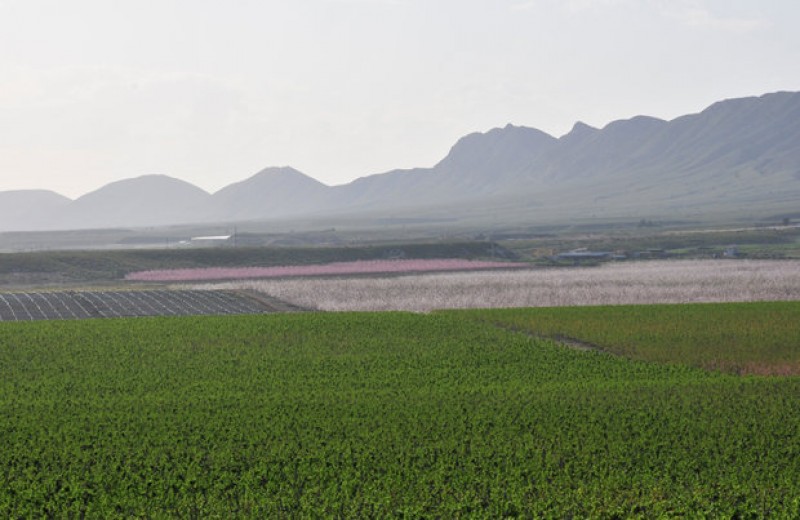 Where our water comes from, what it is used for, and why there isn’t enough
Where our water comes from, what it is used for, and why there isn’t enough
In late 2017 the Region of Murcia and the rest of the Segura basin are facing one of the most serious droughts in recent history, with water supplies to agriculture already having been cut back drastically and the threat of restrictions to domestic supply becoming more and more real with every day that no significant rainfall replenishes supplies in the near-empty reservoirs.
But even among the vast majority of the native Murcianos there is very little real understanding of how this situation has come about. Certainly they know that it has barely rained in Murcia for the last few months, and the news has reached the front pages that the three-month period comprising September, October and November 2017 is likely to end as the driest since comparable records were first compiled 76 years ago, but information regarding the full story of the “hydrological deficit” in the Segura basin is far more difficult to find.
Meteorological statistics also show that during the hydrological year which ended on 30th September 2017 Murcia experienced the second wettest winter on record and the fourth wettest month of August, and during the twelve months the accumulated rainfall total was the fourth highest since 1941.
How is it possible, then, that the level of water in the reservoirs of the Segura basin has dropped to 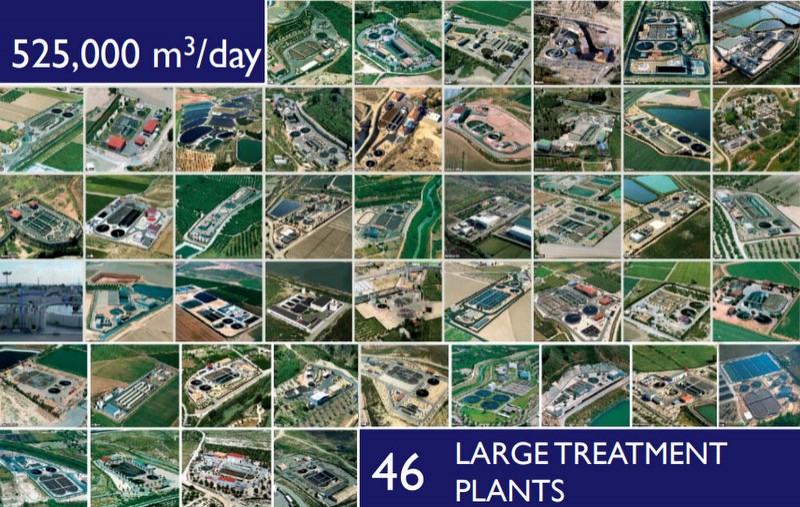 just 13 per cent of capacity (and lower in most of the largest ones), that the crucial agriculture sector of the Murcia economy is being deprived of its most precious resource, and that there is a possibility that before the winter is out supplies could be cut off to homes in the Costa Cálida?
just 13 per cent of capacity (and lower in most of the largest ones), that the crucial agriculture sector of the Murcia economy is being deprived of its most precious resource, and that there is a possibility that before the winter is out supplies could be cut off to homes in the Costa Cálida?
And this in a part of Spain which is recognized worldwide as being one of the best examples in the world of how to manage and utilize limited water resources as beneficially as possible!
More importantly, what solutions, if any, are available to the Confederación Hidrográfica del Segura (CHS), the body which is responsible for administering the water supply in the Segura basin not only to the 2 million or so residents but also to agriculture and industry?
In order to understand these issues it is necessary to understand how water usage in the Segura basin has developed throughout history, and as is so often the case, history begins with geography.
The Segura basin
The basin of the River Segura occupies a land area of 19,025 square kilometres in south-eastern 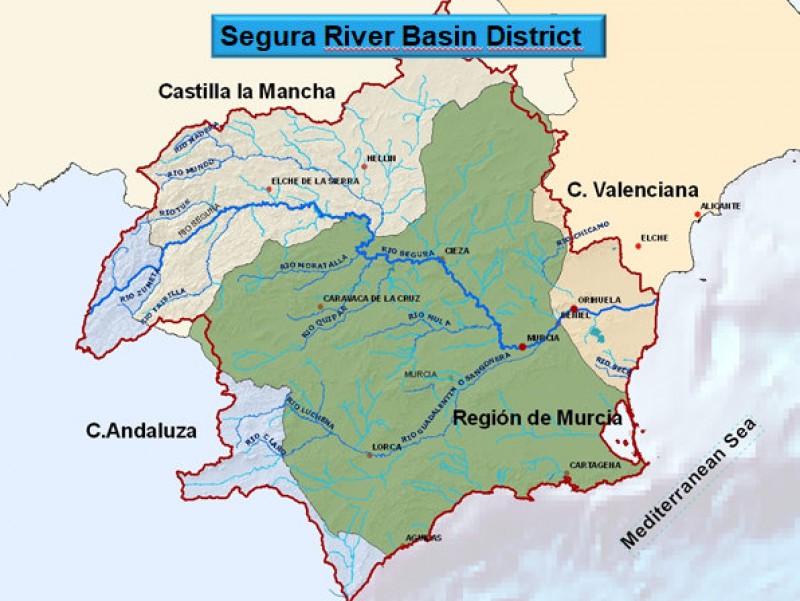 Spain, and although it is most frequently associated with the Region of Murcia that region in fact accounts for only 58.8 per cent of the demarcation. The rest lies in Castilla-La Mancha (25 per cent), the Andalucía provinces of Jaén, Almería and Granada (9.4 per cent) and Alicante (6.8 per cent).
Spain, and although it is most frequently associated with the Region of Murcia that region in fact accounts for only 58.8 per cent of the demarcation. The rest lies in Castilla-La Mancha (25 per cent), the Andalucía provinces of Jaén, Almería and Granada (9.4 per cent) and Alicante (6.8 per cent).
Living in the 132 municipalities which lie wholly or partly in the Segura are approximately 2 million people, a figure which rises substantially during the summer, when visitors flock to the Mediterranean coastal areas. In terms of population Murcia accounts for 73.2 per cent of the inhabitants of the Segura basin and Alicante another 22.1 per cent, while Castilla-La Mancha and Andalucía are home to only 3.4 per cent and 1.3 per cent respectively.
Climate
As expats resident in the Costa Cálida and the Costa Blanca will readily testify, along with those who visit on holiday, one of the most attractive features of this part of Spain is the climate, and of course this has been crucial over the last 100 years for the development of tourism as a major source of economic activity.
But long before that, the same climatic characteristics made Murcia and the Segura basin a natural 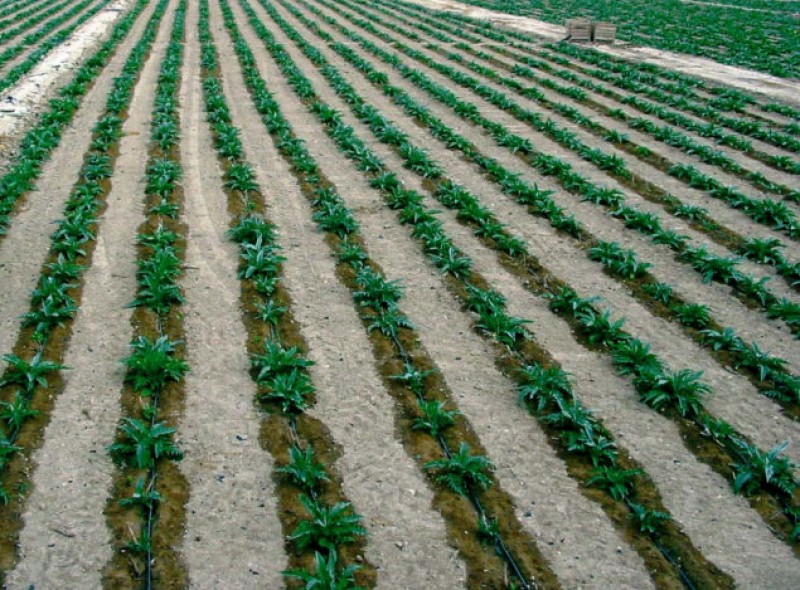 home for the cultivation of fruit and vegetables. The temperature is warm for almost all of the year, there is hardly ever frost in low-lying areas, the soil in the Segura valley and flood plain is fertile (as it is in many other areas, such as the Campo de Cartagena and the Guadalentín valley), and for these reasons not only is it possible to plant for more harvests than in cooler climates, the fruit and veg grown here is also of top quality.
home for the cultivation of fruit and vegetables. The temperature is warm for almost all of the year, there is hardly ever frost in low-lying areas, the soil in the Segura valley and flood plain is fertile (as it is in many other areas, such as the Campo de Cartagena and the Guadalentín valley), and for these reasons not only is it possible to plant for more harvests than in cooler climates, the fruit and veg grown here is also of top quality.
This has led to Murcia and the Segura basin becoming the foremost producer of these goods in Spain, and an area containing only 4.3 per cent of the nation’s population is responsible for between 20 and 30 per cent of the country’s fruit and vegetable exports.
But this remarkable productivity has been achieved not only with the help of the climate, but also in spite of it, because there is one thing which is often lacking from the recipe for successful agriculture in the Segura basin, and that is water.
The average annual rainfall in the geographical area of the basin is an easy to remember 365 millimetres – 1 mm for each day of the year – and this makes it one of the driest of the 215 major river basin districts in Europe. In fact, on the mainland it is by some distance THE driest, although there are similar rainfall figures on some islands, such as those of the Canaries.
On top of this, of course, the rain doesn’t fall at a nice steady rate of 1 millimetre per day. Instead, it tends to reach the south-east of Spain in the form of heavy torrential storms, often highly localized, which can release the equivalent of well over half a year’s annual rainfall in just 24 hours. This, combined with the steep and rocky nature of the mountains inland, has led to the formation of countless floodwater channels or “ramblas” over the millennia, as the rain rushes towards the coast rather than being absorbed into the subsoil.
There have been 215 serious floods in the Region of Murcia in the last 500 years, ample illustration of the problems.
For those growing fruit and vegetables, this erratic rainfall obviously represents a severe disadvantage. But the civilizations which have settled in the south-east of Spain have viewed it as a challenge rather than a prohibitive factor, and as a result agriculture has flourished to the extent where Murcia is now often referred to as the “huerta” (or market garden) of Spain.
History
Neither the Romans, who arrived in the Iberian Peninsula in the 3rd century BC and ruled over most of it for at least six centuries, nor the Moors, who occupied the territory of Murcia from 713 to 1243 AD, were going to let their agricultural ambition be stifled by the unpredictable water supply, and both cultures, particularly the latter, constructed a series of infrastructures which in many areas are still in use today.
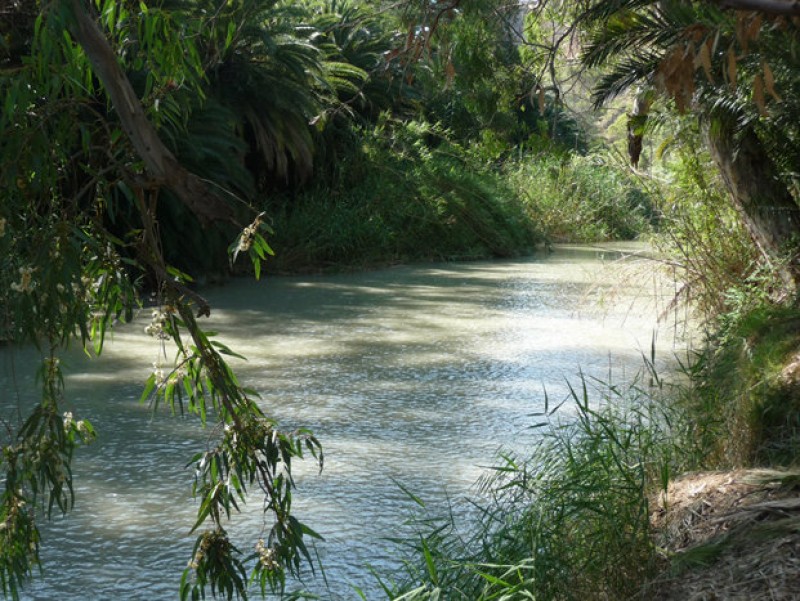 This consisted mainly of small weirs and networks of irrigation ditches which are still known today by the names, derived from Arabic, of “acequias” and “azarbes”. These ditches allowed water from natural water courses to be diverted onto flat agricultural land, while small locks or gates permitted the control of irrigation so that the water supply could successively be provided first to one field and then to another. Systems such as these can still be found in much of the countryside around the city of Murcia, in the Vega Baja area of Alicante, in the Guadalentín valley and, for example, in the fields south of Archena.
This consisted mainly of small weirs and networks of irrigation ditches which are still known today by the names, derived from Arabic, of “acequias” and “azarbes”. These ditches allowed water from natural water courses to be diverted onto flat agricultural land, while small locks or gates permitted the control of irrigation so that the water supply could successively be provided first to one field and then to another. Systems such as these can still be found in much of the countryside around the city of Murcia, in the Vega Baja area of Alicante, in the Guadalentín valley and, for example, in the fields south of Archena.
These strategies, then, allowed agriculture to remain the mainstay of the economy in the Segura basin from the time of the Romans onwards.
But as the population grew in the Early Modern period so too did the need for more agricultural produce, and in the early 18th century another key period of development in water supply infrastructures was promulgated by Luis Antonio de Belluga y Moncada, better known as Cardinal Belluga, after whom the square in front of Murcia Cathedral is named. For around 20 years before he moved to Rome in 1724, Cardinal Belluga made great efforts to increase the amount of land which could be farmed in the Segura valley and flood plain, and as a result of his initiatives water courses were cleared and the networks of acequias were extended and made more efficient. Dams and reservoirs were also built in order to make it easier to supply water all year round.
It was not until the early 20th century, though, that engineers were able to design and build the large dams which went a long way towards ensuring that the majority of the rain which falls on higher ground is eventually collected. These infrastructures provided a further boost to agriculture in Murcia and the rest of the Segura, enabling the sector to continue growing far beyond the capacity of previous centuries, and under the dictatorship of General Franco (1939-75) construction began on what eventually became the most important water infrastructure in Spain.
This is the Tajo-Segura water supply canal, which came into operation in 1979, and which makes it 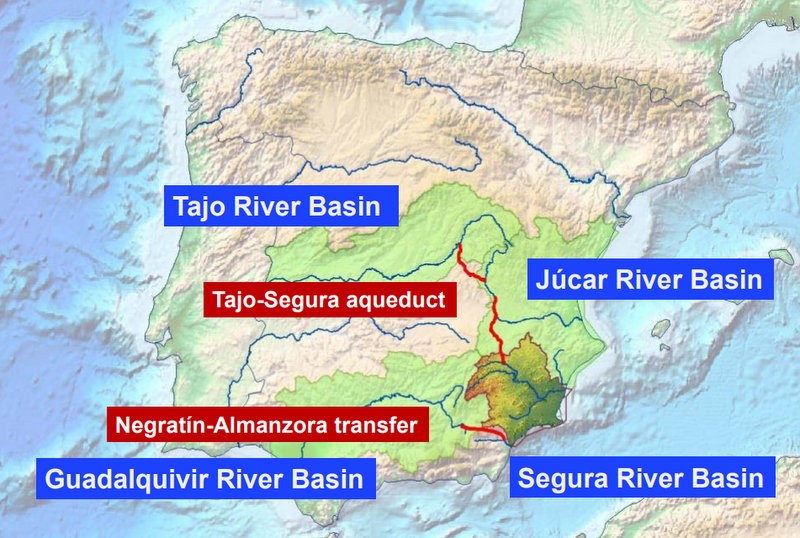 possible for water to be supplied to the Segura from outside the basin, namely from the headwaters of the River Tajo (or Tagus) in Teruel, Guadalajara and Cuenca, to the east of Madrid. Suddenly it became possible to plant crops which require irrigation in many more areas of the Segura basin and Murcia, and in consequence another period of rapid growth ensued in the agricultural sector. More water meant more agriculture and more demand for water, and this demand spiralled upwards as more and more crops were planted.
possible for water to be supplied to the Segura from outside the basin, namely from the headwaters of the River Tajo (or Tagus) in Teruel, Guadalajara and Cuenca, to the east of Madrid. Suddenly it became possible to plant crops which require irrigation in many more areas of the Segura basin and Murcia, and in consequence another period of rapid growth ensued in the agricultural sector. More water meant more agriculture and more demand for water, and this demand spiralled upwards as more and more crops were planted.
EU funding also played an important part in this development, and just a couple of decades later further technological advances made it possible to desalinate seawater for agriculture and domestic consumption. Again the Spanish government was quick to see the possibilities for further growth, and agriculture was one of the main beneficiaries, so that although production costs are high it was with the security cushion of desalinated water that crop farming in Murcia and the rest of the basin grew to its current level of activity.
Drawbacks
But the prosperity based on agriculture and “artificial” water supply is, unfortunately, a precarious one. At root the Region of Murcia and the Segura basin are still inherently dry, and with the effects of climate change the average temperature is rising and the rainfall patterns are becoming still more erratic.
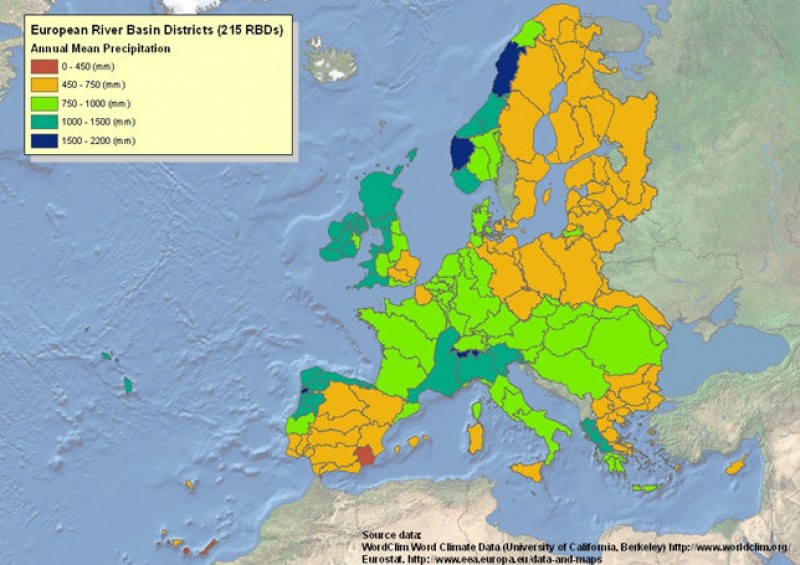 A telling statistic here is that the “natural water flow” in the Segura basin provides an average of 330 cubic metres (or 330,000 litres) of water per inhabitant every year. This may seem a lot, but when needs such as those of industry, agriculture and other uses are taken into account the UN describes any figure of under 1,000m3 per person per year as “catastrophically low”.
A telling statistic here is that the “natural water flow” in the Segura basin provides an average of 330 cubic metres (or 330,000 litres) of water per inhabitant every year. This may seem a lot, but when needs such as those of industry, agriculture and other uses are taken into account the UN describes any figure of under 1,000m3 per person per year as “catastrophically low”.
In other words, although the water supply in the basin has increased dramatically over the last century, so too has the population (from 600,000 to 1.5 million in Murcia) and the level of agricultural activity has risen even more steeply. For this reason the natural water supply remains drastically insufficient, and there is therefore a great deal of dependence on supplies from other sources apart from surface water.
Supply and demand in the 21st century
At present the CHS identifies an annual demand for water in the Segura basin of 1,843 cubic hectometres, of which only 258 hm3 is related to “urban” (including domestic) supply. That equates to just 14 per cent of the total, while a massive 83.9 per cent (or 1,546 hm3) is accounted for by the needs of agriculture.
The remainder, 39 hm3 or 2.1 per cent, is reserved for environmental purposes such as releasing stored water in order to maintain a healthy flow rate in the River Segura itself.
Industrial usage (9 hm3) and the watering of golf courses (11 hm3) are included in the figure for urban supply.
(Note: the cubic hectometre, or gigalitre, is the measure used for large quantities of water, and is equivalent to the amount of water contained in a cube measuring 100 metres in length, breadth and height. It contains a million litres.)
Interestingly, the figure of 1,843 hm3 is still only 920 cubic metres per inhabitant, short of the UN threshold of 1,000 m3.
This, then, is the demand side of the equation, but what of the supply side?
In a typical hydrological year (1st October to 30th September), the CHS hydrological planning might be constructed as follows (according to planning documents for the period 2015-2021):
Water (supplied from reservoirs and direct from rivers) 400 hm3
Groundwater (aquifers or drought wells) 218 hm3
Transfers (the Tajo-Segura and also the much smaller Negratín – Segura) 322 hm3
Regenerated or re-used water 270 hm3
Desalinated water 193 hm3
Total 1,403 hm3
Which, it is easy to see, is still 440 hm3 (or 23.9 per cent) short of the target.
This is what is referred to when mention is made of the “inherent water deficit” in the Segura basin: such is the extent to which demand, particularly agricultural demand, has been allowed to grow, that even when all of the resources available are taken into account there is not enough water to meet it.
If this were a profit and loss account, the business would be running at a significant loss!
The situation in late 2017
And that deficit has been even more pronounced as a result of the drought which has affected the Segura basin for the last three years, a situation which has resulted in it becoming almost impossible to envisage maintaining the profit and loss account even with a negative balance of 400 hm3.
That situation is as follows regarding each of the above sources of water:
Surface water
It has recently been announced by the CHS that the intention over the 2017-18 hydrological year is to release only 215 hm3 from the basin’s reservoirs, a little over half of the theoretical target outlined above. However, even that amount is dependent on rain falling in the right geographical locations to replenish the reservoirs, as reserves on 21st November 2017 stood at only 151 hm3.
That last figure which has fallen from 261 hm3 in November 2016, and represents only 13 per cent of the Segura reservoirs’ capacity. The rate at which those reserves are being diminished has been slowed by the cutting back of irrigation water supplies, but even so it is essential that rainfall arrive soon and in significant quantities if the figure is not to fall even further.
Groundwater
It has already been announced that all of the drought wells and aquifers in the Segura basin are to be opened in the course of the coming months, and farmers are keen for them to become operational immediately.
However, it isn’t quite as simple as opening a tap. On the one hand, environmental impact reports must 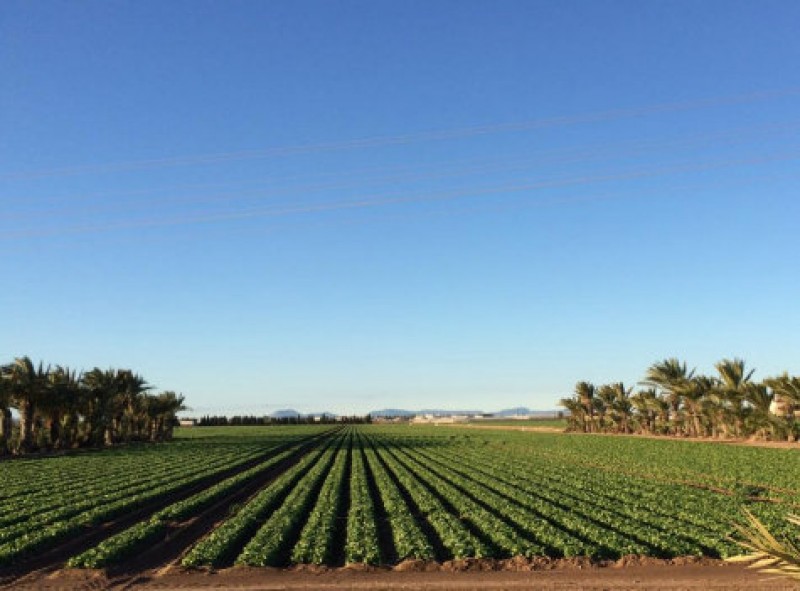 be compiled, while on the other hand in most cases it is necessary to update, repair or replace the equipment to be used: in many instances this equipment deteriorates when it is not used for a long time, while in others it has unfortunately been stolen.
be compiled, while on the other hand in most cases it is necessary to update, repair or replace the equipment to be used: in many instances this equipment deteriorates when it is not used for a long time, while in others it has unfortunately been stolen.
On top of which, it is necessary to re-connect the electricity supply needed for that equipment to be operated, and at the same time great care has to be taken to avoid affecting the underlying water table by extracting too much water, as happened in 1995 during the last period of extreme drought to affect the Segura basin.
In other words, the amount of water extracted from aquifers must take sustainability into account, for which reason it is possible to increase the figure of 218 hm3 but not without limit. At the same time, it has to be remembered that the water extracted from drought wells is not suitable for human consumption and will therefore only be destined for agricultural use.
Transfers
At present there is simply not enough water in the reservoirs at the headwaters of the Tajo for any water to be transferred to the Segura. The “trasvase” is effectively closed, and will remain so until such time as the reserves in Cuenca, Teruel and Guadalajara return to healthier levels.
Since the Tajo-Segura was opened in 1979 only once has the maximum of 400 hm3 been supplied for agriculture in the Segura basin (a further 100 hm3 is available for urban supply and another 30 hm3 for other uses). The average annual volume of water transferred has been 196 hm3, and given the situation in the autumn of 2017 it seems unlikely that the target of 322 hm3 will be met.
The far smaller Negratín-Segura transfer is also dry in late 2017, removing the possibility of a further 30 to 40 hm3 of water being supplied to the Segura.
Regenerated water
The Segura basin is one of the leading examples in the world of how urban waste water can be treated and made suitable for re-use (“regeneration” is the preferred term for this). Approximately 98 per cent of all waste water, or sewage, is made available for agricultural purposes, a figure which is the envy of other arid regions all over the planet.
While this is a laudable achievement, though, it means that there is little if any room for further improvement!
Desalinated water
The figure of just under 200 hm3 is arrived at with all of the relevant desalination plants working to their full present capacity, although there are plans to increase that capacity at the installation in Torrevieja, in the province of Alicante. In addition there are almost another 100 hm3 potentially available from desalination plants run by the MCT (the Mancomunidad de Canales del Taibilla, which is responsible for urban supplies to Town Halls in Murcia, Alicante and southern Albacete).
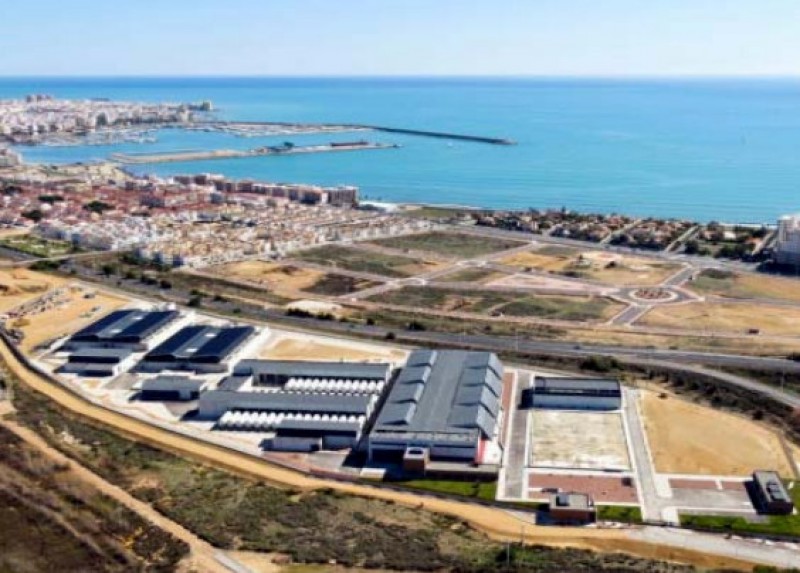 Huge investment was made into desalination in the early years of this century by the Spanish government, a policy which drew strong criticism at the time. Now, though, the positive side of that investment is becoming abundantly clear.
Huge investment was made into desalination in the early years of this century by the Spanish government, a policy which drew strong criticism at the time. Now, though, the positive side of that investment is becoming abundantly clear.
However, there are problems with desalinated water, one of them being water quality. One of the most problematic aspects of desalination is eliminating the element boron from the water produced, and at present the level of boron in desalinated water in the Segura basin means that it is barely acceptable for use either in urban supply or in agriculture, and for this reason the water is mixed with supplies from other sources.
Another concern is related to the marine environment, as the highly concentrated brine which is a side effect is returned to the sea, increasing salinity.
On top of this, desalinated water is expensive, and while domestic consumers are partly protected from a rapid increase in the water bills the same is not true of agriculturalists.
So while desalination is often seen as the potential solution to all water supply problems, the issue is in fact far from clear-cut.
Conclusion
All of the above goes to show exactly what is meant by the phrase “structural hydrological deficit”, and the extent to which the situation has been exacerbated by the current prolonged drought in the Region of Murcia, the rest of the Segura basin and most of the rest of Spain. There is very little water in the reservoirs of the Segura, none on its way from other basins, and other sources can offer only a limited amount in compensation for these shortfalls.
What are the possible long-term solutions?
During a meeting with Murcia Today Miguel Ángel Ródenas, the president of the CHS, discussed the following potential long-term solutions to the water supply problems now being faced by the Region of Murcia and the rest of south-eastern Spain
1. The Ebro-Segura Trasvase?
A plan for this infrastructure was approved by the national government of Spain in 2001, when the 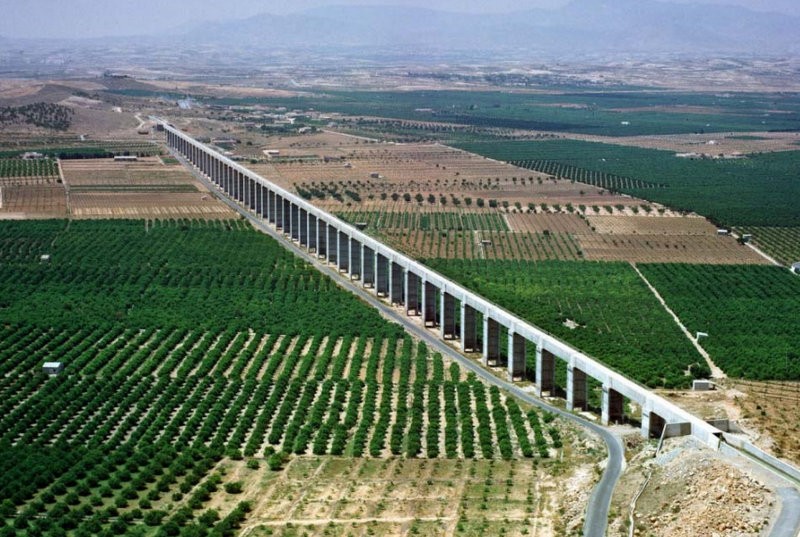 intention was to invest over 4,000 million euros in making it possible to transport water from the Ebro basin in the province of Tarragona (in southern Catalunya) to Valencia, Alicante, Murcia and Almería.
intention was to invest over 4,000 million euros in making it possible to transport water from the Ebro basin in the province of Tarragona (in southern Catalunya) to Valencia, Alicante, Murcia and Almería.
However, apart from the ceremonial laying of the first stone of the project in Almería, no work was ever undertaken, and the transfer canal was officially shelved in June 2004. At present there are no official plans to revive the scheme, but in the view of Sr Ródenas this would be the only way to guarantee the plugging of the hole in the hydrological budgets of the Segura basin for the foreseeable future.
In order for projects on such a grand scale to become a reality, it would be essential for central government to take control of the whole water supply system in Spain and eliminate the inevitable arguments between regional governments and, on occasion, between different river basin authorities. Sr Ródenas is in favour of this centralization of responsibility if it makes it possible for a solution to be found to the situation in south-eastern Spain, pointing out the flaws in an organizational system which has led to Murcia suffering drought while in the reservoirs of the Ebro there is still water which is not assigned to any specific use. This water is therefore released and allowed to “escape” into the sea.
There is little doubt that the Ebro-Segura trasvase would provide such a solution, but unfortunately the project is no longer on the table and if it is to materialize in the future then it will take many years for it to do so.
2. Increased desalination?
It is certainly possible to build more desalination plants and increase output at existing facilities, thus reducing the water deficit in the Segura basin. But to do so would require a lot of time and a lot of money, and while concerns remain over water quality, environmental issues and cost (see above) the president of the CHS is of the opinion that although production can be increased, it is not a realistic means in which to solve the problem in the Segura.
3. Can more reservoirs be built?
When heavy storms arrive such as those which caused catastrophic flooding in Los Alcázares in December 2016, it is hard for drought-stricken farmers to see millions of litres of water running into the 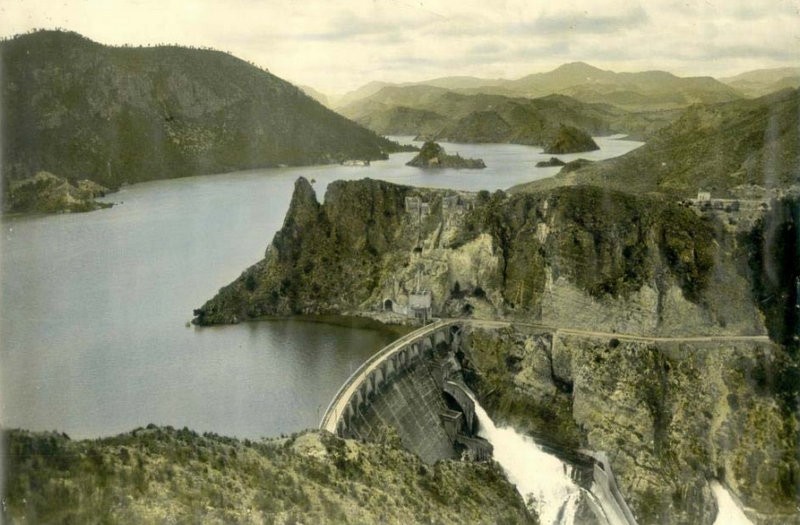 sea. However, the truth of the matter is that there is not much more scope for building more dams and reservoirs to “catch” water in the Segura basin.
sea. However, the truth of the matter is that there is not much more scope for building more dams and reservoirs to “catch” water in the Segura basin.
To create such infrastructures on the flat land of the Campo de Cartagena which lies inland from Los Alcázares, for example, is simply not feasible, while in the more mountainous terrain inland the number of reservoirs already in operation is such that most of the available water is already being collected. Of course it is always possible to collect more, but the financial and logistical resources which would be required to construct new reservoirs would not be rewarded with any significant increase in the amount of water made available.
4. Reduce irrigation farming?
The over-stretching of the water reserves in the Segura basin, despite the increased resources which have become available throughout history and more especially in the last few decades, is principally the product of the increase in the amount of land on which irrigation farming is carried out.
The area included in this category expanded enormously after the opening of the Tajo-Segura transfer canal in 1979, and again between 1984 and 1990: during these years the subsidiary supply canals were completed, and in addition a new law regarding water usage came into force on 1st January 1986, making it possible for more water to be extracted from underground sources on privately owned land acquired before that date.
Thus, in 1984 the amount of irrigated farmland in the Segura basin was around 166,000 hectares, but just ten years later it had risen by almost 50 per cent to 244,000 hectares. Since then the figure has remained more or less stable.
In purely mathematical terms, a return to the level of irrigation farming which existed in 1984 (or at least to the level of demand at that time) would go a long way towards solving the structural water deficit in Murcia and the rest of the basin.
But of course the political and economic reality is that the only way in which this is likely to happen is if farmers stop planting crops of their own accord. This may happen if the current water shortage persists over the next few years, but the chances of any public body obliging them to do so are so slim as to be unworthy of further consideration.
So where does that leave us?
In an interview with Murcia Today in November 2017 Miguel Ángel Ródenas, the president of the CHS, was unwilling or unable to rule out the possibility of cuts in the water supply to homes in the Segura basin being introduced during the winter for the first time in over 20 years.
When asked whether he could do so, he limited his reply to reiterating the CHS’ commitment to doing everything within its power to ensure that the domestic mains water supply is not interrupted, but in the light of all of the information above that may not be enough.
There are, in effect, no more rabbits to be pulled out of the hat at present, and Sr Ródenas admits that he, like the farmers, anxiously consults both the short-term and long-term weather forecasts in the hope that some relief may be on the way in the form of rain.
In other words: fingers crossed!
(Images by kind permission of the CHS)












